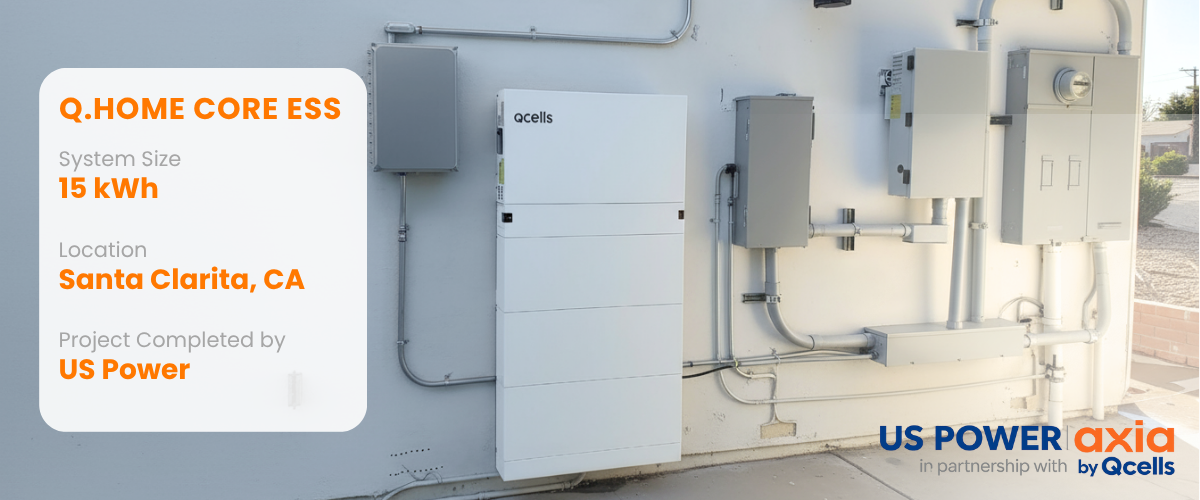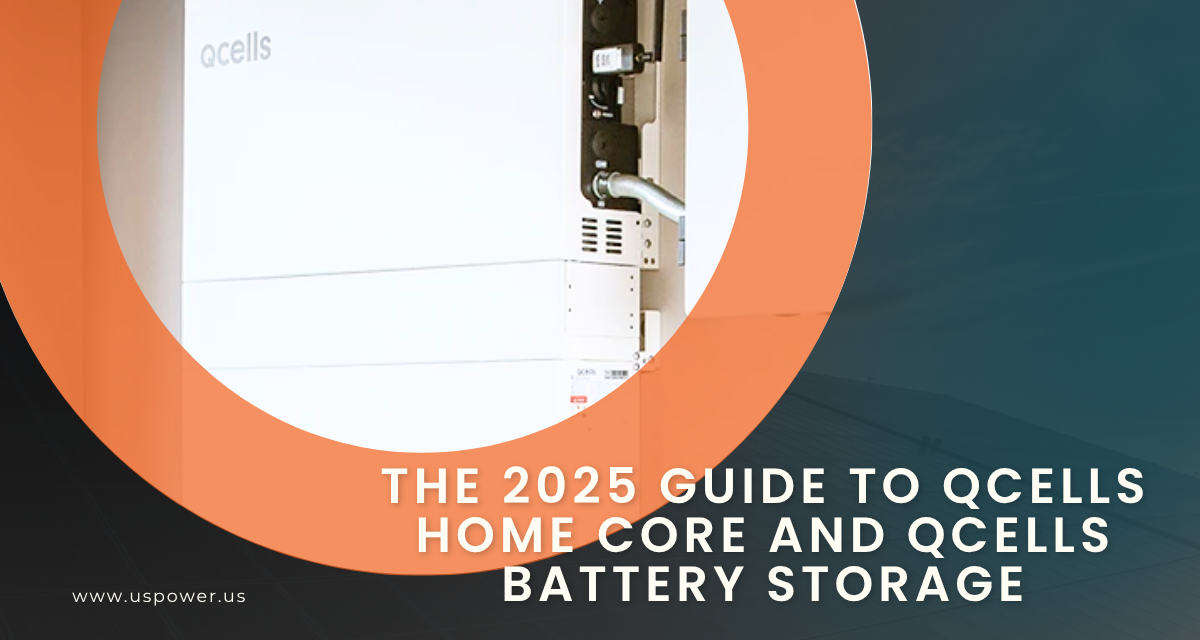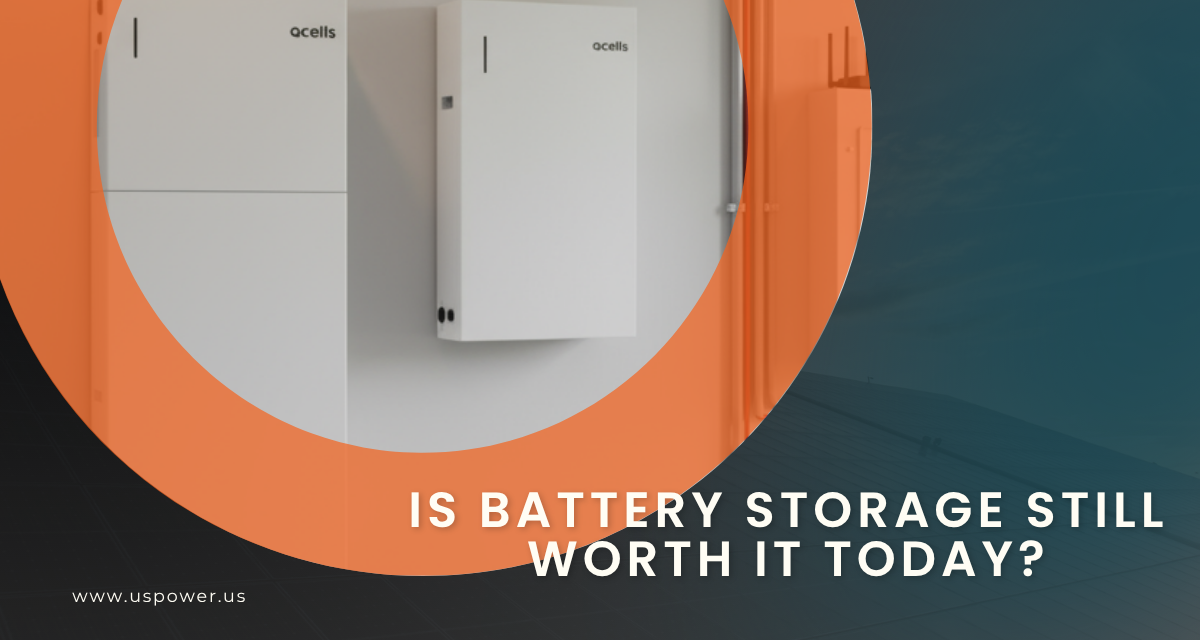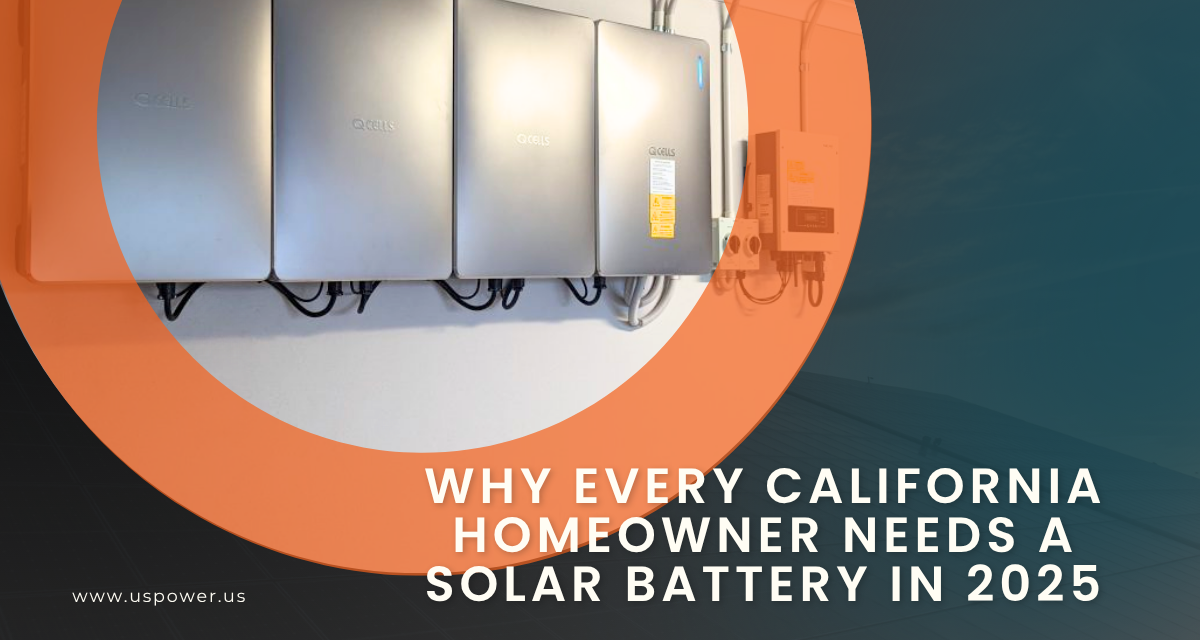Maximize Solar Savings in Santa Clarita with Qcells Battery

Solar and Roofing Advisor
Pair Qcells panels with a battery to maximize savings and reliability through US Power—Your Solar + Battery Storage Expert in Southern California.

Homeowners in Santa Clarita are facing rising electricity costs and growing uncertainty about grid reliability. With newer solar rules in California and evolving utility rate structures, now is the time to rethink how your home gets powered. A high‑efficiency solar system from our exclusive partner Qcells — combined with a modern battery storage solution — delivers a trifecta: cost‑control, independence, and resilience. Schedule your solar + battery consultation with US Power to see how your home can benefit.
Southern California’s Energy Landscape & Why It Matters
- In the service area of Southern California Edison (SCE) — which covers Santa Clarita — the average residential electricity rate is about 31.4 ¢ per kWh as of March 2025.
- Under SCE’s Time‑of‑Use (TOU) plans, rates during peak hours can rise significantly — recent guidance shows ranges between 23 ¢/kWh and 74 ¢/kWh depending on plan and time.
- Wildfire mitigation shut‑offs, grid stress, and increasing regulation mean many households are motivated to both reduce their utility spend and ensure backup power on outage‑days.
For Santa Clarita homeowners, this means: high cost per unit of electricity + risk of power interruptions = strong case for solar + battery.
What Changed with Net Energy Metering (NEM) — Why Batteries Matter
In California, the shift from NEM 2.0 to NEM 3.0 has significantly altered solar economics:
- Under NEM 2.0, exporting excess solar to the grid often earned near‑retail credits. Under NEM 3.0, export compensation is lower and less predictable.
- Because exported power returns less value, storing excess solar on‑site becomes more financially beneficial.
- Batteries let homeowners shift more of their solar production to when they need it most — evenings, high‑rate hours, and outages.
In practical terms: if your panel system produces more than the home uses during the day, instead of just sending it to the grid for a modest credit, a battery enables use later when utility rates are highest — increasing the value of each solar‑kWh produced.
How Solar + Battery Systems Work for Your Home
Here’s a simplified logic for how solar + battery improves performance for homeowners:
- During the day your Qcells panels generate electricity.
- Excess production feeds the battery instead of (or in addition to) the grid.
- At night or during the evening peak you draw from the battery, reducing grid consumption when electricity is most expensive.
- In a grid outage your battery can power critical circuits (or the whole home if sized accordingly) — providing resilience.
- Over time you consume more of your self‑generated power (higher “self‑consumption”) and export less at low value, improving financial return.
This operational model becomes especially compelling in Santa Clarita due to the high rates and the value of backup power.
Why Qcells + US Power = Premium Value
US Power has an exclusive partnership with Qcells, offering homeowners key advantages:
- High‑efficiency, American‑made Qcells panels: Quality, reliability, performance.
- Factory‑direct pricing: Eliminates middle‑men, passing savings to homeowners.
- Seamless battery integration: US Power designs systems explicitly to pair Qcells with storage for optimal performance and savings.
- Local expertise: Serving Santa Clarita and surrounding Southern California, US Power understands local incentives, permitting, solar orientation, and utility rate structures.
Choosing Qcells through US Power means homeowners are not only getting a reliable system — they’re getting one optimized for the new energy era in California.
Updated 2025 Savings Snapshot for Santa Clarita
Here are current facts and realistic savings benchmarks (based on typical conditions for Santa Clarita) — with disclaimers that every home is unique:
- Federal Solar Investment Tax Credit (ITC): 30 % tax credit remains in effect for solar systems installed by eligible dates. This applies to the solar portion of a combined solar + battery system.
- For batteries to qualify for the ITC, they generally must be charged primarily by the solar system (not from the grid).
- With residential average rates at ~31.4 ¢/kWh (SCE), each kWh you avoid buying becomes valuable.
- California’s Self‑Generation Incentive Program (SGIP) offers rebates for residential battery installations — for example, the “Solar & Storage Equity” track opens June 2 2025 and offers significant incentive levels.
- Example scenario: A Santa Clarita home installs a 7 kW Qcells solar array with a 13.5 kWh battery. If the home shifts 40 % of its usage from peak grid rates to stored solar, the utility cost savings, combined with federal and state incentives, could result in payback in ~6–8 years (depending on usage, load profile, TOU plan).
- Note: This is a typical scenario and not a guaranteed outcome — actual savings vary by home system size, usage patterns, and rate plan.
- Because export compensation is reduced under NEM 3.0, maximizing on‑site usage (via storage) becomes a key driver of ROI.
In summary: homeowners in Santa Clarita can realistically expect meaningful savings and energy cost stabilization when they adopt solar + battery systems designed for the 2025 regulatory environment.
Backup Power — More Than Just Savings
Financial savings matter. But equally important is energy resilience, especially for Southern California:
- Wildfire‑related Public Safety Power Shutoffs (PSPS) and other grid interruptions are becoming more frequent.
- A battery‑backed solar system means you’re not just saving money — you’re protecting your home’s functionality when the grid goes down.
- During an outage, essential loads (refrigeration, lighting, communications, security) remain powered. With appropriate design, even full home backup is possible.
- This reliability adds value to your home — and peace of mind for your family.
For Santa Clarita homeowners, where utility outages and escalation of wildfire risk are real concerns, solar + battery isn’t just optional — it’s increasingly strategic.
Financing & Incentives in 2025
Here’s a breakdown of the most relevant financial elements for homeowners in 2025:
- Federal ITC (30 %): Applies to solar systems and batteries (if conditions met) for systems installed by eligible date.
- SGIP rebates: Residential battery storage rebates under SGIP; the “equity” track offers heightened incentives for low‑income or high‑risk homes.
- Zero‑down financing options: US Power offers financing plans that let homeowners begin saving from day one, rather than waiting for payback.
- Local permitting & rebates: US Power handles local Santa Clarita permitting, HOA approvals, utility interconnection — reducing homeowner burden.
- Incentive stacking: Solar + storage systems benefit from layered savings — solar production + avoided grid usage + export optimization + battery backup value.
Every homeowner’s situation is different, so the consultation from US Power includes a personalized system design and savings estimate — rather than a generic “one-size” claim.
Why Santa Clarita Homeowners Choose US Power
Here are the differentiators that make US Power a trusted partner:
- Local Focus: Based in Southern California with specific experience in Santa Clarita’s climate, shading, utility zone and permit environment.
- Exclusive Qcells Partnership: Gives homeowners access to American-made panels with factory‑direct pricing — rare in the market.
- Educational Approach: US Power doesn’t push to sell; instead, the team walks homeowners through usage data, rate structure, incentives, and system design — empowering informed decisions.
- Turnkey Service: From site visit to activation, the process is managed end‑to‑end, including incentive paperwork and utility interconnection.
For a homeowner in Santa Clarita seeking both savings and security, US Power offers the expertise and equipment to deliver.
Your Next Step — Ready to Schedule?
Take control of your home energy future now!
Our solar consultants evaluates your home’s orientation, usage pattern, shade, roof condition, and local rates — and then provides a clear design, cost estimate and savings projection based on the latest 2025 data.
For homeowners in Santa Clarita, a solar installation by US Power paired with battery storage isn’t just an option — it’s one of the most strategic decisions they can make in 2025. With high electricity rates, new regulatory dynamics under NEM 3.0, and increased grid risks, the combination of Qcells panels + battery storage helps unlock savings, resilience and peace of mind. Because US Power handles the complex parts — design, permitting, incentives — homeowners gain confidence and clarity.
Schedule your FREE consultation today and power your home smarter, safer and more cost‑effectively.
FAQ – Common Homeowner Questions
Q1. Is battery storage still worth it under NEM 3.0?
Yes. Since export compensation under NEM 3.0 is reduced, maximizing on‑site solar usage via a battery offers significantly higher value than relying on exporting alone.
Q2. How much does a battery system cost in Santa Clarita?
Costs depend on capacity, brand, installation complexity and usage profile. Typical battery systems (10‑15 kWh) might range from $9,000‑$15,000 before incentives — though rebates and ITC can reduce net cost materially.
Q3. Can I add a battery to my existing Qcells solar system?
Absolutely. If your existing Qcells panels are sized and oriented well, US Power can design a compatible battery that integrates seamlessly, increasing your savings and resilience.
Q4. How long will my solar + battery system last?
Modern panels (like Qcells) carry warranties often 25 years or more. Battery systems typically last 10‑15 years (or more) depending on use and technology. Proper maintenance and monitoring extend lifetime and performance.
Q5. What incentives are available in 2025 for solar + battery?
- Federal ITC at ~30% for solar (and for batteries if charged by solar).
- SGIP rebates for residential energy storage in California — especially strong for equity and high‑risk fire zones.
- Financing plans that allow net‑zero or very low‑out‑of‑pocket installation, accelerating savings.
Artículos relacionados
Nuestros blogs relacionados
Power your home smarter with Qcells Home Core solar + battery storage with US Power!
Maximize your 2025 solar ROI with compliant, reliable home battery storage.
California’s new solar rules, it’s no longer enough to just go solar— storage is key.
Nuestros socios de marcas de energía solar y techos








Empoderamos a las comunidades y las empresas para que aprovechen las energías limpias y renovables energía solar soluciones que impulsan el crecimiento sostenible.
Derechos de autor © 2025 US POWER | Energía solar y techosUS Power - Axia by QCells. All Rights Reserved.
La privacidad es importante para nosotros, por lo que tiene la opción de deshabilitar ciertos tipos de almacenamiento que pueden no ser necesarios para el funcionamiento básico del sitio web. El bloqueo de categorías puede afectar a su experiencia en el sitio web.
Imprescindible
Estos elementos son necesarios para habilitar la funcionalidad básica del sitio web.
Personalización
Estos elementos permiten que el sitio web recuerde las elecciones que ha realizado (como el nombre de usuario, el idioma o la región en la que se encuentra) y proporcionan funciones mejoradas y más personales.
Mercadeo
Estos artículos se utilizan para ofrecer publicidad que sea más relevante para usted y sus intereses.
Analítica
Estos elementos ayudan al operador del sitio web a comprender cómo funciona su sitio web, cómo interactúan los visitantes con el sitio y si puede haber problemas técnicos.
Nosotros y nuestros socios externos utilizamos cookies y otras tecnologías para mejorar y rastrear su experiencia en este sitio, realizar análisis y personalizar el marketing para usted. Al usar el sitio, aceptas que usemos estas tecnologías, incluido el registro y el monitoreo de tus interacciones con el sitio.
¡Obtenga una estimación solar instantánea usando el satélite!










